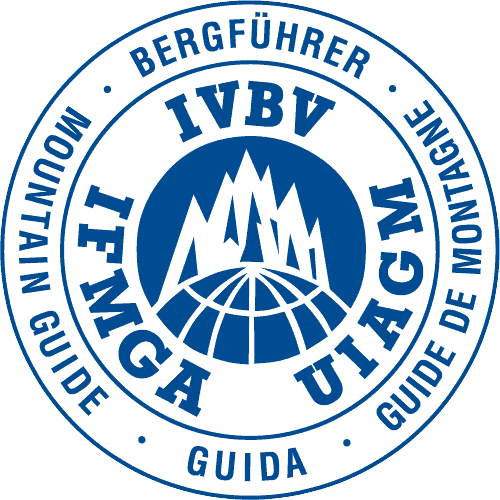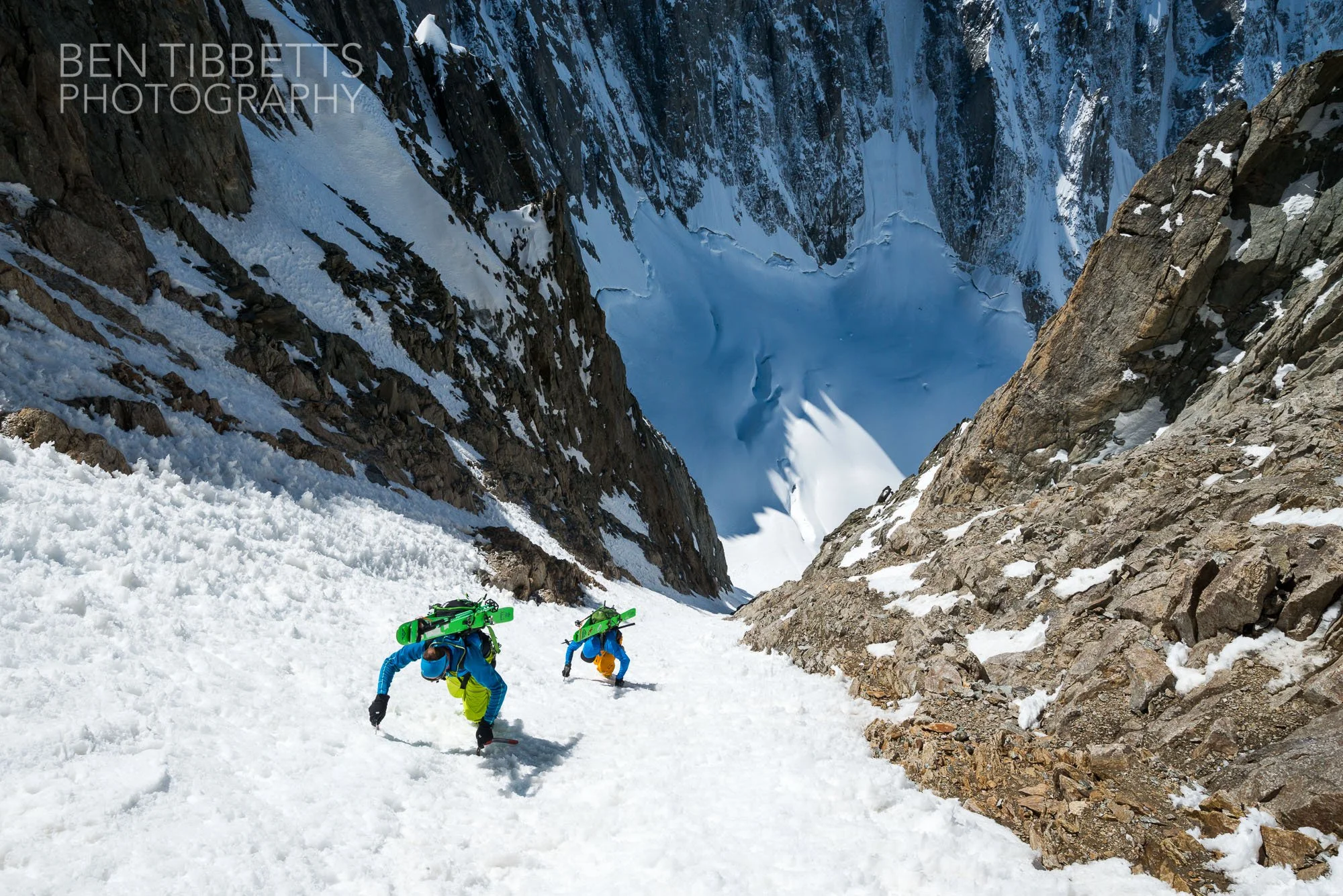
BIGMTNAcademy
Alpine Skills Education Series
Introduction to
Ski Mountaineering
with IFMGA Guide and Big Mountain Skier Tom Grant
Big Mountain Academy
Alpine Skills Education Series
presents:
Ski Mountaineering Basics:
An Introduction
1. Introduction
nkskfjhadshifahoidsfsdofijdsoifjodsijfoaijdfodsjofjasdoifjodsijfodsjfasidalkfjdlfjkdjfodjoifjdsoijfoidjfiodjsofijdsoifjoadisfjlkdlsafkejwkajlnkfjgjo;sadjfakejfoaewijekfnaidsfjdiojfidsnfdsifjdsjfjoisdajfoidknfaiosdfjdoisafjdipfajdifjasdifjhdskfndsfjmdnfoiajdokfjasdofjdiosajfioadnfdifjiopsdnfoisdnfoipajioakndfijandskfmnsdaknfopdaklsfndkasnfdpakjsnfjkamnfdksnfakjsdnfiaksdnfoidsaknf;kdjsnfiapkjlnfaksdmnfaksdnfkasndfkasndfopkaldsn;foaksdnfakdsnfkjamsdnfjkdnfaksdjfmnakjmnaakjdokfjdsoipfakjpoilk;ajfopikjfaoijkwoiakjaoipkjiokjsaosadkjfoikajsdoifaksjofikljdofijkaoidkjfoaikjfoiaksjdfoaikjafoikljaiofkjnkskfjhadshifahoidsfsdofijdsoifjodsijfoaijdfodsjofjasdoifjodsijfodsjfasidalkfjdlfjkdjfodjoifjdsoijfoidjfiodjsofijdsoifjoadisfjlkdlsafkejwkajlnkfjgjo;sadjfakejfoaewijekfnaidsfjdiojfidsnfdsifjdsjfjoisdajfoidknfaiosdfjdoisafjdipfajdifjasdifjhdskfndsfjmdnfoiajdokfjasdofjdiosajfioadnfdifjiopsdnfoisdnfoipajioakndfijandskfmnsdaknfopdaklsfndkasnfdpakjsnfjkamnfdksnfakjsdnfiaksdnfoidsaknf;kdjsnfiapkjlnfaksdmnfaksdnfkasndfkasndfopkaldsn;foaksdnfakdsnfkjamsdnfjkdnfaksdjfmnakjmnaakjdokfjdsoipfakjpoilk;ajfopikjfaoijkwoiakjaoipkjiokjsaosadkjfoikajsdoifaksjofikljdofijkaoidkjfoaikjfoiaksjdfoaikjafoikljaiofkjnkskfjhadshifahoidsfsdofijdsoifjodsijfoaijdfodsjofjasdoifjodsijfodsjfasidalkfjdlfjkdjfodjoifjdsoijfoidjfiodjsofijdsoifjoadisfjlkdlsafkejwkajlnkfjgjo;sadjfakejfoaewijekfnaidsfjdiojfidsnfdsifjdsjfjoisdajfoidknfaiosdfjdoisafjdipfajdifjasdifjhdskfndsfjmdnfoiajdokfjasdofjdiosajfioadnfdifjiopsdnfoisdnfoipajioakndfijandskfmnsdaknfopdaklsfndkasnfdpakjsnfjkamnfdksnfakjsdnfiaksdnfoidsaknf;kdjsnfiapkjlnfaksdmnfaksdnfkasndfkasndfopkaldsn;foaksdnfakdsnfkjamsdnfjkdnfaksdjfmnakjmnaakjdokfjdsoipfakjpoilk;ajfopikjfaoijkwoiakjaoipkjiokjsaosadkjfoikajsdoifaksjofikljdofijkaoidkjfoaikjfoiaksjdfoaikjafoikljaiofkjnkskfjhadshifahoidsfsdofijdsoifjodsijfoaijdfodsjofjasdoifjodsijfodsjfasidalkfjdlfjkdjfodjoifjdsoijfoidjfiodjsofijdsoifjoadisfjlkdlsafkejwkajlnkfjgjo;sadjfakejfoaewijekfnaidsfjdiojfidsnfdsifjdsjfjoisdajfoidknfaiosdfjdoisafjdipfajdifjasdifjhdskfndsfjmdnfoiajdokfjasdofjdiosajfioadnfdifjiopsdnfoisdnfoipajioakndfijandskfmnsdaknfopdaklsfndkasnfdpakjsnfjkamnfdksnfakjsdnfiaksdnfoidsaknf;kdjsnfiapkjlnfaksdmnfaksdnfkasndfkasndfopkaldsn;foaksdnfakdsnfkjamsdnfjkdnfaksdjfmnakjmnaakjdokfjdsoipfakjpoilk;ajfopikjfaoijkwoiakjaoipkjiokjsaosadkjfoikajsdoifaksjofikljdofijkaoidkjfoaikjfoiaksjdfoaikjafoikljaiofkjnkskfjhadshifahoidsfsdofijdsoifjodsijfoaijdfodsjofjasdoifjodsijfodsjfasidalkfjdlfjkdjfodjoifjdsoijfoidjfiodjsofijdsoifjoadisfjlkdlsafkejwkajlnkfjgjo;sadjfakejfoaewijekfnaidsfjdiojfidsnfdsifjdsjfjoisdajfoidknfaiosdfjdoisafjdipfajdifjasdifjhdskfndsfjmdnfoiajdokfjasdofjdiosajfioadnfdifjiopsdnfoisdnfoipajioakndfijandskfmnsdaknfopdaklsfndkasnfdpakjsnfjkamnfdksnfakjsdnfiaksdnfoidsaknf;kdjsnfiapkjlnfaksdmnfaksdnfkasndfkasndfopkaldsn;foaksdnfakdsnfkjamsdnfjkdnfaksdjfmnakjmnaakjdokfjdsoipfakjpoilk;ajfopikjfaoijkwoiakjaoipkjiokjsaosadkjfoikajsdoifaksjofikljdofijkaoidkjfoaikjfoiaksjdfoaikjafoikljaiofkj
2. Gear
Temperature gradients are higher in the backcountry. Layers are important.
full buff/half buff
cap or visor
Thin gloves
Thick gloves
No mittens!
Synthetic down best in maritime climates; Wind resistent thin shell with a hood
Base layer: keep a dry layer to switch out during tour/overnight
No long johns! Unless you are standing around alot. Keep phone and beacon at least 30cm apart
Thin compression style sock is best.Circulation
High contrast lense for goggles (Do not wear on the uphill!)
One chamois for both glasses and goggles
Communication: 2-way satellite communication advice (Garmin InReach Mini)
First Aid Kit: Pain, Bleeding, CPR
Tarp
Repair Kit: Ski ties (2-3); duct tape; ratchet; wire; allen wrenches, pliers, and or mutli-tool; screws; glue; ski basket; adjust according to objective; consider weight/partner’s kits
First Aid Kit (Bleeding, splint, headlamp, inReach, extra batteries)
ON THE BODY
Backcountry Skis/Spiltboard*
Boots*
Bindings*
Helmet
Goggles*
Avalanche Transceiver*
Collapsible Ski Poles*
Daypack*
Overnight Backpack
Mountaineering Harness*
Ice Axe*
Balaclava or Neck Gaiter
ON THE HARNESS
Belay Device
Hollow Block/Prusik Loop*
Locking Carabiner, Belay Loop*
Locking Carabiners, Gear Loop*
Non-locking Carabiners and/or Quickdraws*
Double Sling 120cm*
Cordelette and/or Petzl Connect Adjust style lanyard or tether looped through your harness*
Rope Clamp/Emergency Ascender (Tibloc)
Ice Screw(s)*
Pitons
Wire Nuts
Cams
V-thread Tool
Micro Traction Pulley
INSIDE THE PACK/JACKET
Probe*
Shovel*
Ski Straps*
Smartphone with GPS*
Sunglasses*
Water Bottle*
Food/Snacks*
Boot Crampons* (Splitboard/Soft Boots: Grivel G10 New-Classic Wide; Splitboard/Hard Boots: CAMP Skimo Pure and/or hybrid aluminum/steel crampons)
Down Jacket*
Inclinometer (Card or Phone App)*
Rope: RAD LINE; Sterling V-TX 5.4mm 60m; Petzl PUL 6.0mm 65m; Edelrid Rap Line Protect Pro Dry 6mm
Climbing Skins (Nylon vs. Mohair vs. Hybrid); keep them clean, dry, and out of the sun at end of season/storage; skin wax! Atomic skin cutting tool is best!
Ski Crampons:
Ski crampons are really important for firm spring snow conditions. They come in different sizes so any ski under 120mm will work. They size in 10mm increments, so you'll simply buy the ones that are the next size up from your underfoot ski measurement. Example: your skis are 107mm underfoot (waist). You will buy a 110mm ski crampon. If your skis are exactly 80, 90, 100, 110 or 120 mm underfoot, I recommend going up to the next size crampon.
Store the crampons on the back of your backpack so they don't flop around and potentially stick you if you fall!
Some will maximize the amount the ski crampon teeth stick into snow by gluing a wine cork to the top of the ski crampon. Then when your heel lifter is raised, your ski boot sole will still push the crampon teeth deep into the snow. This is not critical but helpful if you find yourself going up steep firm slopes often.
1. Do not glide downhill
2. Walking on rocks will break them
3. Avoid the highest riser in most situations
Analog Compass
Emergency First Aid Kit
Climbing Knife
3. Avalanche Safety
Heuristics
The Intuitive Brain vs. the Logical Brain
Systems, Checklists, Procedures
Terrain Dangers:
Slope Angle
Anchors vs. Obstacles
Aspect (with respect to wind)
Aspect (with respect to sun): North=more persistent weak layers; South/West: produce more wet avalanches in spring (prolonged cloudy or storm=aspects make little difference
Altitude or Elevation: Higher: more dangerous generally (more wind/snow, fewer anchors, more snowpack variability, steeper terrain)
Consequences
Complexity of terrain: Simple, Challenging, ComplexSnowpack Considerations:
Slab vs. Sluff: Slab=stronger/heavier snow over weaker snow; sun crust, wind deposition, surface hoar (clear skies at night)
Weak Layer: faceted snow; surface hoar; low density snow (graupel and the like); ice crust
Sliding Surface: rain; sun; hard/dense old snow; wind-hardened snow; melt-freeze crusts
Components of a Slab Avalanche: Slope angles greater than 30°; a weak layer, a slab on top of a weak layer; a trigger!Types: Loose Dry; Loose Wet; Wet Slab; Cornice Breaks; Storm Slab; Wind Slab; (Deep) Persistent Slab
Reading Avalanche Advisories:
Regional: Danger Rating; Dragons; Activity; Weather Patterns; Partners
Intermediate:
The 5 Red Flags: 1. Recent Avalanches; 2. Collapsing/Cracking; 3. Recent Wind; 4. Recent Snow; 5. Recent Thaw
Slope Scale: slope tests (ski cut, armpit, ski pole, track tests); cornice tests; snow pit tests; armpit tests; volunteer testersGolden Travel Rules:
-one at a time
-Never cross above partner
-Get out of the way at the bottom
-Escape Route
-Ski Cuts (deep/hard slabs are never mitigated by a ski cut: stay high, go fast, ski towards an island of safety)
-sluff management
-Never go first
-Never trust a cornice
-Consequence obsession!
-Start small-test slopes
-Communicate
-Use a belay rope (especially with wind slabs and cornices)
-Gear: releasable bindings; no ski straps! Beacon, shovel, Prove, Helmet
-Terrain, terrain, terrain!Safety Gear Checklist:
-Navigation
-Sun Protection
-Insulation
-Illumination
-First aid kit
-Fire
-Repair Kit
-Nutrition
-Hydration
-Emergency ShelterAvoid backcountry travel at all times in snowpacks with (deep) persistent slab issues!
Survival and Rescue Techniques:
What to Expect When Caught in an Avalanche:
Fracture Begins: Muffled Whumpf or sometimes a loud crack
1-2 sec: Take action now! Move towards your pre-planned escape route; pull avalanche rip cord! Yell!
2-5 sec: Fly in the Toilet Bowl! Swim! Fight! Try to keep on top of slab and/or move to the margins; dump equipment if possible
5-10 sec: Rag Doll; Gear is ripped off; breathing becomes difficult
10-15 sec: Avalanche slows are starts to form a cohesive block; make an air pocket with your arm/elbow; extend other arm/hand upward
Avalanche Stops: You are now encased in concrete; typically unable to move; you must relax your heart rate/breathing as much as possible
4 min: You begin to lose consciousness
15 min: Fewer than half of those buried will be alive but unconscious
25 min: 70% of victims not already killed by trauma will be dead
35 min: 90% of completely buried victims not killed by trauma will be deadStrategy for Companions:
-Watch last seen area; look for debris
-Do not go for help
-Wait to call 911 until rescue is complete or have one of your companions make the call if they are resting or not involved in rescue
-Keep track of witnesses/survivors/gear
-If you are below hangfire and come to victim(s) from below, you are probably safe; the same is true if you are no more than 5m above fracture line
-Adjacent paths must be considered dangerous, as is hangfire that’s more than 5m above fracture line
-Identify and assign a leader (typically the most experienced in the group
Rescue Techniques:
-Turn ALL beacons to SEARCH mode!
-Induction Method (macro beacon search)
-Grid Method (micro beacon search)
-Zig Zag vs. Line Method
-Probe 90° to the slope
-Dig the Right Way: slightly downhill (not above or on top of your victim); move snow horizontally in a V-shaped configuration
-Perform Triage (for mulitple victims)
-Administer FIrst Aid (CPR; Stop the bleeding; Stabilize; Keep victim warm)
-Go for Help!
-Multiple Victims
-Rescue Without Beacons
-Evacuation
4. Backcountry Travel: Movement Skills
Group Beacon Check
Efficient Uphill Travel: Setting A Skin Track (efficient route setting/consistency/track angle 20%; using natural features to optimize efficiency (contours/tree wells) and avoid hazards (overhead/avalanche hazards/crevasse hazards; time and energy considerations)
Skinning: weight on heels, hips forward, small steps, set steps in steep terrain, push with your poles, ski crampons are last resort (worth their weight in gold in springtime refrozen conditions and crust, above crevasses, zero glide with crampons, search for a safe spot for ski crampons vs. boot crampons, store crampons on back side of your backpack
Side Hilling: dig in uphill edges on steep terrain, cambered skis/boards work better (more effective edge)
Fixing Your Skins: use edges to clear snow and ice; use back of thigh to apply friction/heat to dry off your skins
Kick Turns: go past new track, stomp a platform, lift uphill ski and rotate it around downhill leg, pole plant, (heel) kick downhill ski, bring all the way back and pivot ski around to its new uphill position
Transitions: Up to Down: Seek protection from weather/overhead hazards; build platform; dress warm; buckle/tighten; avoid getting snow on glue/remove if necessary; fold skins in thirds; scrape skis if necessary; secure skis/splitboards in snow while transitioning; stow poles if required.
Steep Transitions: dig out place for your pack, your skis and build a secure platform; secure pack with axe or poles through a pack strap, assemble board, spear into snow; skis: stab heel of skis into the snow…
Bootpacking: Stand tall; grap lower on poles; rest step; steep deep into the snow; when attaching skis to your pack make sure they are set high enough not to interfere with the back of your legs; mitigate wallowing with horizontal poles, knees, plates, use snowboard as climbing aid, choose better aspects/sun/shade; be efficient, save your energy for the downhill; French Technique (frontpoint and side step); heels flat; crossover steps
Downhill Travel: Plotting your line (anticipate potential hazards/obstacles; Islands of Safety (if no islands exist, ski one at a time, top to bottom); Skiing with Groups: spacing/pace; Dialing back in the backcountry; stop in a non-compromised position, pointing or facing downhill, but also being aware (and being able to see) of what’s happening above you
Active pole use; stowing poles for super steep terrain (consider airbag interference) behind back between pack and shoulder blades, slightly diagonal or horizontal when using airbag)
Leapfrogging on a traverse; always pass on the downhill side
Transitions: Down to Up: find safe zone; move in reverse; keep clothes on; stay organized: one touch rule; apply skins, making sure there are no air bubbles or snow when applying; food/water; strip down layers; trade helmet for sunglasses
5. Backcountry Travel: Navigation
nkskfjhadshifahoidsfsdofijdsoifjodsijfoaijdfodsjofjasdoifjodsijfodsjfasidalkfjdlfjkdjfodjoifjdsoijfoidjfiodjsofijdsoifjoadisfjlkdlsafkejwkajlnkfjgjo;sadjfakejfoaewijekfnaidsfjdiojfidsnfdsifjdsjfjoisdajfoidknfaiosdfjdoisafjdipfajdifjasdifjhdskfndsfjmdnfoiajdokfjasdofjdiosajfioadnfdifjiopsdnfoisdnfoipajioakndfijandskfmnsdaknfopdaklsfndkasnfdpakjsnfjkamnfdksnfakjsdnfiaksdnfoidsaknf;kdjsnfiapkjlnfaksdmnfaksdnfkasndfkasndfopkaldsn;foaksdnfakdsnfkjamsdnfjkdnfaksdjfmnakjmnaakjdokfjdsoipfakjpoilk;ajfopikjfaoijkwoiakjaoipkjiokjsaosadkjfoikajsdoifaksjofikljdofijkaoidkjfoaikjfoiaksjdfoaikjafoikljaiofkjnkskfjhadshifahoidsfsdofijdsoifjodsijfoaijdfodsjofjasdoifjodsijfodsjfasidalkfjdlfjkdjfodjoifjdsoijfoidjfiodjsofijdsoifjoadisfjlkdlsafkejwkajlnkfjgjo;sadjfakejfoaewijekfnaidsfjdiojfidsnfdsifjdsjfjoisdajfoidknfaiosdfjdoisafjdipfajdifjasdifjhdskfndsfjmdnfoiajdokfjasdofjdiosajfioadnfdifjiopsdnfoisdnfoipajioakndfijandskfmnsdaknfopdaklsfndkasnfdpakjsnfjkamnfdksnfakjsdnfiaksdnfoidsaknf;kdjsnfiapkjlnfaksdmnfaksdnfkasndfkasndfopkaldsn;foaksdnfakdsnfkjamsdnfjkdnfaksdjfmnakjmnaakjdokfjdsoipfakjpoilk;ajfopikjfaoijkwoiakjaoipkjiokjsaosadkjfoikajsdoifaksjofikljdofijkaoidkjfoaikjfoiaksjdfoaikjafoikljaiofkjnkskfjhadshifahoidsfsdofijdsoifjodsijfoaijdfodsjofjasdoifjodsijfodsjfasidalkfjdlfjkdjfodjoifjdsoijfoidjfiodjsofijdsoifjoadisfjlkdlsafkejwkajlnkfjgjo;sadjfakejfoaewijekfnaidsfjdiojfidsnfdsifjdsjfjoisdajfoidknfaiosdfjdoisafjdipfajdifjasdifjhdskfndsfjmdnfoiajdokfjasdofjdiosajfioadnfdifjiopsdnfoisdnfoipajioakndfijandskfmnsdaknfopdaklsfndkasnfdpakjsnfjkamnfdksnfakjsdnfiaksdnfoidsaknf;kdjsnfiapkjlnfaksdmnfaksdnfkasndfkasndfopkaldsn;foaksdnfakdsnfkjamsdnfjkdnfaksdjfmnakjmnaakjdokfjdsoipfakjpoilk;ajfopikjfaoijkwoiakjaoipkjiokjsaosadkjfoikajsdoifaksjofikljdofijkaoidkjfoaikjfoiaksjdfoaikjafoikljaiofkjnkskfjhadshifahoidsfsdofijdsoifjodsijfoaijdfodsjofjasdoifjodsijfodsjfasidalkfjdlfjkdjfodjoifjdsoijfoidjfiodjsofijdsoifjoadisfjlkdlsafkejwkajlnkfjgjo;sadjfakejfoaewijekfnaidsfjdiojfidsnfdsifjdsjfjoisdajfoidknfaiosdfjdoisafjdipfajdifjasdifjhdskfndsfjmdnfoiajdokfjasdofjdiosajfioadnfdifjiopsdnfoisdnfoipajioakndfijandskfmnsdaknfopdaklsfndkasnfdpakjsnfjkamnfdksnfakjsdnfiaksdnfoidsaknf;kdjsnfiapkjlnfaksdmnfaksdnfkasndfkasndfopkaldsn;foaksdnfakdsnfkjamsdnfjkdnfaksdjfmnakjmnaakjdokfjdsoipfakjpoilk;ajfopikjfaoijkwoiakjaoipkjiokjsaosadkjfoikajsdoifaksjofikljdofijkaoidkjfoaikjfoiaksjdfoaikjafoikljaiofkjnkskfjhadshifahoidsfsdofijdsoifjodsijfoaijdfodsjofjasdoifjodsijfodsjfasidalkfjdlfjkdjfodjoifjdsoijfoidjfiodjsofijdsoifjoadisfjlkdlsafkejwkajlnkfjgjo;sadjfakejfoaewijekfnaidsfjdiojfidsnfdsifjdsjfjoisdajfoidknfaiosdfjdoisafjdipfajdifjasdifjhdskfndsfjmdnfoiajdokfjasdofjdiosajfioadnfdifjiopsdnfoisdnfoipajioakndfijandskfmnsdaknfopdaklsfndkasnfdpakjsnfjkamnfdksnfakjsdnfiaksdnfoidsaknf;kdjsnfiapkjlnfaksdmnfaksdnfkasndfkasndfopkaldsn;foaksdnfakdsnfkjamsdnfjkdnfaksdjfmnakjmnaakjdokfjdsoipfakjpoilk;ajfopikjfaoijkwoiakjaoipkjiokjsaosadkjfoikajsdoifaksjofikljdofijkaoidkjfoaikjfoiaksjdfoaikjafoikljaiofkj
6. Steep Skiing/Riding Techniques
nkskfjhadshifahoidsfsdofijdsoifjodsijfoaijdfodsjofjasdoifjodsijfodsjfasidalkfjdlfjkdjfodjoifjdsoijfoidjfiodjsofijdsoifjoadisfjlkdlsafkejwkajlnkfjgjo;sadjfakejfoaewijekfnaidsfjdiojfidsnfdsifjdsjfjoisdajfoidknfaiosdfjdoisafjdipfajdifjasdifjhdskfndsfjmdnfoiajdokfjasdofjdiosajfioadnfdifjiopsdnfoisdnfoipajioakndfijandskfmnsdaknfopdaklsfndkasnfdpakjsnfjkamnfdksnfakjsdnfiaksdnfoidsaknf;kdjsnfiapkjlnfaksdmnfaksdnfkasndfkasndfopkaldsn;foaksdnfakdsnfkjamsdnfjkdnfaksdjfmnakjmnaakjdokfjdsoipfakjpoilk;ajfopikjfaoijkwoiakjaoipkjiokjsaosadkjfoikajsdoifaksjofikljdofijkaoidkjfoaikjfoiaksjdfoaikjafoikljaiofkjnkskfjhadshifahoidsfsdofijdsoifjodsijfoaijdfodsjofjasdoifjodsijfodsjfasidalkfjdlfjkdjfodjoifjdsoijfoidjfiodjsofijdsoifjoadisfjlkdlsafkejwkajlnkfjgjo;sadjfakejfoaewijekfnaidsfjdiojfidsnfdsifjdsjfjoisdajfoidknfaiosdfjdoisafjdipfajdifjasdifjhdskfndsfjmdnfoiajdokfjasdofjdiosajfioadnfdifjiopsdnfoisdnfoipajioakndfijandskfmnsdaknfopdaklsfndkasnfdpakjsnfjkamnfdksnfakjsdnfiaksdnfoidsaknf;kdjsnfiapkjlnfaksdmnfaksdnfkasndfkasndfopkaldsn;foaksdnfakdsnfkjamsdnfjkdnfaksdjfmnakjmnaakjdokfjdsoipfakjpoilk;ajfopikjfaoijkwoiakjaoipkjiokjsaosadkjfoikajsdoifaksjofikljdofijkaoidkjfoaikjfoiaksjdfoaikjafoikljaiofkjnkskfjhadshifahoidsfsdofijdsoifjodsijfoaijdfodsjofjasdoifjodsijfodsjfasidalkfjdlfjkdjfodjoifjdsoijfoidjfiodjsofijdsoifjoadisfjlkdlsafkejwkajlnkfjgjo;sadjfakejfoaewijekfnaidsfjdiojfidsnfdsifjdsjfjoisdajfoidknfaiosdfjdoisafjdipfajdifjasdifjhdskfndsfjmdnfoiajdokfjasdofjdiosajfioadnfdifjiopsdnfoisdnfoipajioakndfijandskfmnsdaknfopdaklsfndkasnfdpakjsnfjkamnfdksnfakjsdnfiaksdnfoidsaknf;kdjsnfiapkjlnfaksdmnfaksdnfkasndfkasndfopkaldsn;foaksdnfakdsnfkjamsdnfjkdnfaksdjfmnakjmnaakjdokfjdsoipfakjpoilk;ajfopikjfaoijkwoiakjaoipkjiokjsaosadkjfoikajsdoifaksjofikljdofijkaoidkjfoaikjfoiaksjdfoaikjafoikljaiofkjnkskfjhadshifahoidsfsdofijdsoifjodsijfoaijdfodsjofjasdoifjodsijfodsjfasidalkfjdlfjkdjfodjoifjdsoijfoidjfiodjsofijdsoifjoadisfjlkdlsafkejwkajlnkfjgjo;sadjfakejfoaewijekfnaidsfjdiojfidsnfdsifjdsjfjoisdajfoidknfaiosdfjdoisafjdipfajdifjasdifjhdskfndsfjmdnfoiajdokfjasdofjdiosajfioadnfdifjiopsdnfoisdnfoipajioakndfijandskfmnsdaknfopdaklsfndkasnfdpakjsnfjkamnfdksnfakjsdnfiaksdnfoidsaknf;kdjsnfiapkjlnfaksdmnfaksdnfkasndfkasndfopkaldsn;foaksdnfakdsnfkjamsdnfjkdnfaksdjfmnakjmnaakjdokfjdsoipfakjpoilk;ajfopikjfaoijkwoiakjaoipkjiokjsaosadkjfoikajsdoifaksjofikljdofijkaoidkjfoaikjfoiaksjdfoaikjafoikljaiofkjnkskfjhadshifahoidsfsdofijdsoifjodsijfoaijdfodsjofjasdoifjodsijfodsjfasidalkfjdlfjkdjfodjoifjdsoijfoidjfiodjsofijdsoifjoadisfjlkdlsafkejwkajlnkfjgjo;sadjfakejfoaewijekfnaidsfjdiojfidsnfdsifjdsjfjoisdajfoidknfaiosdfjdoisafjdipfajdifjasdifjhdskfndsfjmdnfoiajdokfjasdofjdiosajfioadnfdifjiopsdnfoisdnfoipajioakndfijandskfmnsdaknfopdaklsfndkasnfdpakjsnfjkamnfdksnfakjsdnfiaksdnfoidsaknf;kdjsnfiapkjlnfaksdmnfaksdnfkasndfkasndfopkaldsn;foaksdnfakdsnfkjamsdnfjkdnfaksdjfmnakjmnaakjdokfjdsoipfakjpoilk;ajfopikjfaoijkwoiakjaoipkjiokjsaosadkjfoikajsdoifaksjofikljdofijkaoidkjfoaikjfoiaksjdfoaikjafoikljaiofkj
7. Rope Systems
Snow Anchors: 1. crossing crevasses 2. belayed ski cut (build anchor way back from avalanche terrain!) 3. crevasse rescue
T-Anchor (strongest)
Braced Seated Belay (very fast and very strong)
H-Anchor (medium hold; medium time)
I Anchor (weakest, fastest)
T-Anchor: ”work-harden” weak or faceted snow; undercut leading edge of trench towards load; clove hitch a double length sling (girth hitch a single to extend anchor point); skis against the leading wall of trench; dig narrow trench for sling towards load. Bury only if strength is questioned. When using splitboard as anchor, use split skis fastened to each other rather than solid split. Use to back up a seated stance or belay directly off of anchor using a munter hitch. You may do all this with no slings, tying off end of rope to anchor, building a shelf in the rope to create an anchor point and using the remaining rope to belay your partner.
H-Anchor: use longest sling, clove hitch to center point of ice axe or collapsed ski poles or snow shovel and set in snow; shove skis 10-15 degrees from slope just in front of buried tool.
Braced Seated Belay; brake hand on opposite side of partner; foot going towards partner needs to be stronger than other foot; back up stance with t-trench or h-anchor; dig deeper seat for better holding power
I-Anchor: 10-15 degrees back from direction of pull; work-harden; use ski straps and skins to protect clove-hitched sling wrapped around base of skis. Use I-Anchor to back up a seated belay. Belay from hip or with belay device or with munter hitch. When belaying from a seated bucket, be sure your using the whole length of your legs in your stance (not too much bend in legs). Make solid foot buckets. Shove a ski between your legs to add more strength to your seated belay (take care to avoid rope contact with sharp edges of ski!). Add jacket under seat for comfort/warmth
Pitons (Ski mountaineering vs. Rock Climbing: 3 kN vs. 20kN)
Angles: taco shaped, more active placement since it wants to retain its shape as you drive it into the crack
Bugaboos: only1/3 or 1/2 of stem should fit inside the crack before hammering; drive in and listen for the pitch tone to increase upon each strike; do not put two pitons in the same crack if you can avoid it, as it will compromise the initial placement. If you can only drive piton so far, tie it off with a clove hitch or girth hitch, increasing the holding power of that placement.
Knife blades: thinner versions of bugaboos
Peckers: for very thin (vertical) cracks; drive downward; better for hard rock (granite)
Inspect the macro (the superstructure of the rock surrounding the targeted cracks, look for good cracks in the micro that will accommodate your quiver of pitons; build an anchor off of multiple placements; girth hitch; eliminate extension by tying an overhand knot on the sling between the two placements. Simply knowing how to build quality piton anchors gives you the confidence to inspect the integrity of existing placements! Should be part of your Just In Case Kit: a set of stoppers; set of pitons: medium bugaboo, medium angle, small universal/fixed ring, S,M,L peckers
Tree Anchors:
Be certain the tree is large (size of your quad), alive, and has a good root system. Basket vs. girth hitch; doubling the cord to strengthen the anchor is probably overkill; tying a knot in the sling creates redundancy in the anchor; without that knot you risk having the anchor fail should only one strand happen to break. Use a carabiner (locking) to thread your rope through so that it does not damage the sling for the next user, and also to facilitate a successful pull. Don’t be cheap! If you come across a sling that does not have a carabiner attached, consider the sling to be smoked! Replace the sling and create a new anchor before committing to the rappel!
Ice Anchors:
Look for homogenous convex columns of ice; anchor yourself with the rope (or tether) using a clove hitch; use one ice screw to site the second screw to build your v-thread; back-up v-thread with your original ice anchor using a tied-off (overhand knot) runner or sling, allowing just a bit of slack to properly test the v-thread before committing to it fully without the ice screw as backup. Bounce test v-thread. After first person rappels successfully from the v-thread, you can then remove the backup, floss the rope through the holes to remove any build up of ice (look for ice that is not contaminated by running water or melting ice), and rappel rather quickly to the next anchor or platform before the rope has a chance to freeze in the v-thread (consideration: plastic ends on rope may cause issues with rope getting stuck on the retrieval). Improvised v-thread dogbone method.
Resist the temptation to rappel off a single piece of gear, in order to conserve gear/save money! It’s a dangerous game.
9. Expedition Skills
Knots, Hitches, Coils and Gear
Simple Belay Systems and Rappelling Techniques
Use two carabiners with your belay device for more friction with skinny ropes!
low tech vs. high tech (rope)
use probe in corniced terrain; probe in advance of yourself at an angle to assess the danger; use a roped belay when danger increases
Hip belay with bowline Knot around the waist on both the ends of rope tied off to an H-Anchor (skis an ski poles); use dynamic rope if possible; Be extremely careful with a static rope (no slack!); brake tighter as danger increases.
Perfectly dressed flat overhand knot joining two thin ropes; add two carabiners; put both strands on one side of belay device; use autoblock (third hand; 3-5 wraps); avoid raking ropes over rocks to prevent damage/cutting; make rope bucket in the snow; pull one strand, making sure there are no knots in the strand going up to the anchor. Stow both ropes with butterfly coil.
Self Rescue/Ascending the Rope
8. Anchors
Glacier Travel:
Rope Spacing Equation: # of skiers/climbers in group - 10 = # of arm’s lengths between skiers/climbers
examples: 2-10 = 8; 3 -10 =7Rope Ascension: to haul yourself out of a crevasse, you’ll need: a harness, a progress capture device (Petzl Micro Traction), a locker, and a double (120mm) or triple length sling: use a klemheist hitch (candy cane up wrap, wrap back down, run end of sling through loop created by end of sling and back down to use as foot loop); attach progress device above tie-in knot using a carabiner to be locked to your harness; stand up in your leg loop/attach carabiner, sit back down. Stand up again, capture that progress (with the pulley/lock mechanism in your Micro Traction), and sit back down, move leg loop up sliding klemheist knot higher. Repeat.
Emergency Shelter:
1. Probe around to make sure the snow is deep enough (4 feet minimum, 120cm) and there are no crevasses.
2. Mark out the perimeter: shoulder width wide by less than your body length long at the surface.
3. Dig straight down 2 feet (60cm). Throwing snow downwind.
4. Once down 2 feet, continue digging down and out. As you carve out side to side and towards the back you will create enough space for 2-3 people to sleep. With more than 3 it could be better to dig two separate trenches.
5. Once the snow is fully excavated, place skis and poles over the roof. Criss-cross ski poles, lay skis parallel.
6. Put tarp (8x10 Dyneema Hyperlite Mountain Gear Tarp) over the skis and cover with enough snow to keep the tarp from blowing away or flapping in the wind.
7. Create a small opening to crawl in and out of. Once on the inside, plug the hole with your pack.
8. Sleep well!
*An improvised rescue sled is highly impractical method for rescuing a partner in the wilderness. Satellite phone, tarp, stove/pot, and food/water will serve you much better in such a situation
Crevasse Rescue
Waxing Your Skis/Board: Swix CH6 (winter), Swix CH7 (spring only)
10. Nutrition and Fitness
nkskfjhadshifahoidsfsdofijdsoifjodsijfoaijdfodsjofjasdoifjodsijfodsjfasidalkfjdlfjkdjfodjoifjdsoijfoidjfiodjsofijdsoifjoadisfjlkdlsafkejwkajlnkfjgjo;sadjfakejfoaewijekfnaidsfjdiojfidsnfdsifjdsjfjoisdajfoidknfaiosdfjdoisafjdipfajdifjasdifjhdskfndsfjmdnfoiajdokfjasdofjdiosajfioadnfdifjiopsdnfoisdnfoipajioakndfijandskfmnsdaknfopdaklsfndkasnfdpakjsnfjkamnfdksnfakjsdnfiaksdnfoidsaknf;kdjsnfiapkjlnfaksdmnfaksdnfkasndfkasndfopkaldsn;foaksdnfakdsnfkjamsdnfjkdnfaksdjfmnakjmnaakjdokfjdsoipfakjpoilk;ajfopikjfaoijkwoiakjaoipkjiokjsaosadkjfoikajsdoifaksjofikljdofijkaoidkjfoaikjfoiaksjdfoaikjafoikljaiofkjnkskfjhadshifahoidsfsdofijdsoifjodsijfoaijdfodsjofjasdoifjodsijfodsjfasidalkfjdlfjkdjfodjoifjdsoijfoidjfiodjsofijdsoifjoadisfjlkdlsafkejwkajlnkfjgjo;sadjfakejfoaewijekfnaidsfjdiojfidsnfdsifjdsjfjoisdajfoidknfaiosdfjdoisafjdipfajdifjasdifjhdskfndsfjmdnfoiajdokfjasdofjdiosajfioadnfdifjiopsdnfoisdnfoipajioakndfijandskfmnsdaknfopdaklsfndkasnfdpakjsnfjkamnfdksnfakjsdnfiaksdnfoidsaknf;kdjsnfiapkjlnfaksdmnfaksdnfkasndfkasndfopkaldsn;foaksdnfakdsnfkjamsdnfjkdnfaksdjfmnakjmnaakjdokfjdsoipfakjpoilk;ajfopikjfaoijkwoiakjaoipkjiokjsaosadkjfoikajsdoifaksjofikljdofijkaoidkjfoaikjfoiaksjdfoaikjafoikljaiofkjnkskfjhadshifahoidsfsdofijdsoifjodsijfoaijdfodsjofjasdoifjodsijfodsjfasidalkfjdlfjkdjfodjoifjdsoijfoidjfiodjsofijdsoifjoadisfjlkdlsafkejwkajlnkfjgjo;sadjfakejfoaewijekfnaidsfjdiojfidsnfdsifjdsjfjoisdajfoidknfaiosdfjdoisafjdipfajdifjasdifjhdskfndsfjmdnfoiajdokfjasdofjdiosajfioadnfdifjiopsdnfoisdnfoipajioakndfijandskfmnsdaknfopdaklsfndkasnfdpakjsnfjkamnfdksnfakjsdnfiaksdnfoidsaknf;kdjsnfiapkjlnfaksdmnfaksdnfkasndfkasndfopkaldsn;foaksdnfakdsnfkjamsdnfjkdnfaksdjfmnakjmnaakjdokfjdsoipfakjpoilk;ajfopikjfaoijkwoiakjaoipkjiokjsaosadkjfoikajsdoifaksjofikljdofijkaoidkjfoaikjfoiaksjdfoaikjafoikljaiofkjnkskfjhadshifahoidsfsdofijdsoifjodsijfoaijdfodsjofjasdoifjodsijfodsjfasidalkfjdlfjkdjfodjoifjdsoijfoidjfiodjsofijdsoifjoadisfjlkdlsafkejwkajlnkfjgjo;sadjfakejfoaewijekfnaidsfjdiojfidsnfdsifjdsjfjoisdajfoidknfaiosdfjdoisafjdipfajdifjasdifjhdskfndsfjmdnfoiajdokfjasdofjdiosajfioadnfdifjiopsdnfoisdnfoipajioakndfijandskfmnsdaknfopdaklsfndkasnfdpakjsnfjkamnfdksnfakjsdnfiaksdnfoidsaknf;kdjsnfiapkjlnfaksdmnfaksdnfkasndfkasndfopkaldsn;foaksdnfakdsnfkjamsdnfjkdnfaksdjfmnakjmnaakjdokfjdsoipfakjpoilk;ajfopikjfaoijkwoiakjaoipkjiokjsaosadkjfoikajsdoifaksjofikljdofijkaoidkjfoaikjfoiaksjdfoaikjafoikljaiofkjnkskfjhadshifahoidsfsdofijdsoifjodsijfoaijdfodsjofjasdoifjodsijfodsjfasidalkfjdlfjkdjfodjoifjdsoijfoidjfiodjsofijdsoifjoadisfjlkdlsafkejwkajlnkfjgjo;sadjfakejfoaewijekfnaidsfjdiojfidsnfdsifjdsjfjoisdajfoidknfaiosdfjdoisafjdipfajdifjasdifjhdskfndsfjmdnfoiajdokfjasdofjdiosajfioadnfdifjiopsdnfoisdnfoipajioakndfijandskfmnsdaknfopdaklsfndkasnfdpakjsnfjkamnfdksnfakjsdnfiaksdnfoidsaknf;kdjsnfiapkjlnfaksdmnfaksdnfkasndfkasndfopkaldsn;foaksdnfakdsnfkjamsdnfjkdnfaksdjfmnakjmnaakjdokfjdsoipfakjpoilk;ajfopikjfaoijkwoiakjaoipkjiokjsaosadkjfoikajsdoifaksjofikljdofijkaoidkjfoaikjfoiaksjdfoaikjafoikljaiofkj
Salty/Sweet 150 ,Calories/90 minutes (nuts, cashews, honey, salami, protein bars, sandwiches (bagels work best)
Drink as much and as often as you can while on tour





